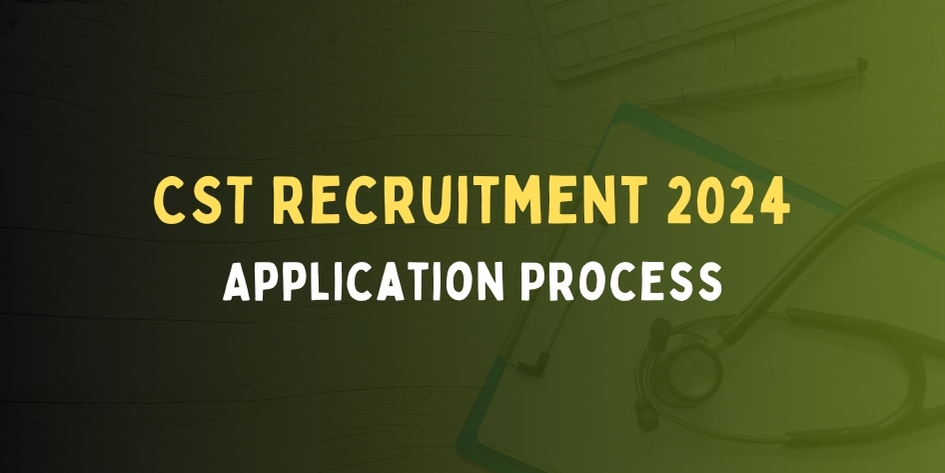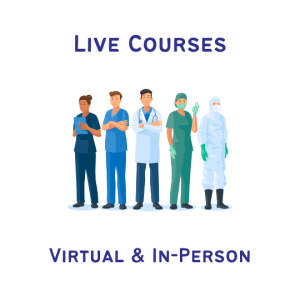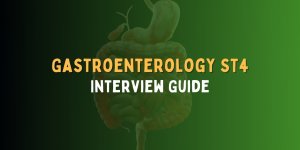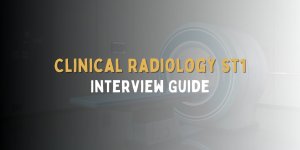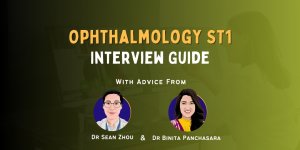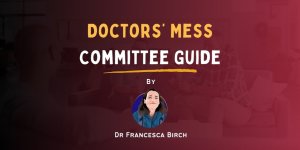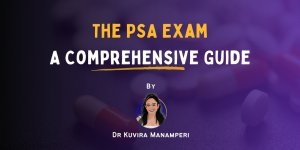
Published October 5, 2022 | Updated June 11, 2024
By Ash Ahluwalia
Orthopaedic Registrar in London, surgical director of MedCourse, and founder of The London Course – interview courses for core and higher speciality training programmes.
Core Surgical Training (CST) is one of the most competitive core training programmes out there, and your CST portfolio self-assessment score in 2024 could make the difference between getting your perfect CST job or needing to take another year to develop your portfolio.
Following 2020 changes to immigration rules, which allowed the inclusion of International Medical Graduates (IMGs) in round 1 of recruitment, the race to get a Core Surgical Training post has never been more ruthless.
You have until December 2023 to eke out the last of your CST portfolio self-assessment points – too late for some sections, but plenty of time for others! In this guide to the CST self-assessment scoring 2024, we’ll go through the rules and where you can maximise your points, as well as some tips to get the most out of your portfolio.
Updated 30th October for final 2023/24 updates.
Hints and Tips by Mr Aashish Ahluwalia
Ash is an Orthopaedic Registrar based in London. He achieved a maximum score in self-assessment and portfolio at both CST and ST3 levels and will be giving you guidance as we go through the CST application scoring.

Ash is also the founder of The London Course, providing surgical interview and exam courses for trainees. If you want an extra boost to make sure you land your dream job, sign up for his fantastic CST interview course, which will also help you to maximise your portfolio self-assessment score. Feel free to get in contact with him at cstinterview@outlook.com.
Key Documents
CST Recruitment Timeline
| Applications open | Thursday 26th October 2023 at 10am |
| Applications close | Thursday 23rd November 2023 at 4pm |
| Invitation to MSRA | By Tuesday 19th December 2023 latest |
| MSRA Window | Thursday 4th January – Tuesday 16th January 2024 |
| Evidence Upload Window | Thursday 8th February – Wednesday 14th February 2024 |
| MSRA Results Date & Invitation to Interview | Thursday 8th February 2024 |
| Interview window | Monday 19th February – Wednesday 28th February 2024 |
| Preferencing Window | By 5pm Tuesday 13th February – Tuesday 5th March 2024 |
| Initial Offers out | Tuesday 26th March 2024 by 5pm |
| Hold deadline | Thurs 4th April 2024 at 1pm |
| Upgrade Deadline | Tuesday 9th April 2023 at 4pm |
| Post start date | Wednesday 7th August 2024 |
Self-Assessment Scoring 2024
As we will discuss in our guide to application and recruitment, the CST application portfolio self-assessment score contributes to 30% of your final score. This score is what decides your ranking and whether you get a CST job or not, so maximising your self-assessment is vital!
In 2023, around 960 of the roughly 2300 applicants will be invited to interview based on their MSRA score. The portfolio self-assessment score was previously used in this shortlisting, however the MDRS announced a change in 2023 application whereby the shortlisting process uses MSRA scores rather than portfolio self-assessment. Final allocation of CST jobs will still depend on the total score, which will be made up of your MSRA score (10%), verified self-assessment score (30%) and interview score (60%).
Maximum CST Portfolio Score
The maximum points available in the CST application portfolio self-assessment in 2024 is 52.
| Section | Maximum Points |
| Operative Experience | 8 |
| Surgical Conferences | 3 |
| Surgical Experience | 3 |
| Quality Improvement – Project | 8 |
| Quality Improvement – Presentation | 5 |
| Presentations and Publications | 10 |
| Teaching Experience | 10 |
| Training Qualifications | 5 |
| Total | 52 |
For all these achievements, you must have evidence of completion to score points. You have until the end of November to complete, gather evidence, and upload this.
Your self-assessment score will be verified by a surgical consultant if you make it into the top 1100, so make sure you’re as accurate as possible when scoring points. These consultants can change your score if they feel you have done this incorrectly, and it if appears that you are deliberately trying to misrepresent your achievements to gain an advantage, you could face a probity probe by the GMC.
Ash’s Tips
A point is a point.
Don’t get bogged down in lengthy projects when a quality improvement project can get you the same number of points. Keep the CST applicant checklist on your phone and see if you work towards scoring a point every day.
Early preparation is the best way to maximise your points and means you can focus on interview technique in the run-up to the CST interview.
Changes in 2024
After the significant changes made in the 2022/23 cycle, we can’t find many changes for the 2023/24 application scoring. Here are the three changes that we found:
Have we missed anything? Get in touch to let us know of any other changes you spotted.
Operative Experience
Gaining operative experience during your foundation years can be difficult, especially if you don’t have a surgical placement. This is an area of the application which might involve getting to theatre on zero days, annual leave, or during an FY3 year.
Involvement in a surgical case is defined as assisting or taking part in supervised trainer scrubbed procedures. It does not include cases which you only observed without scrubbing in.
There are a maximum of 8 points available in this section:
- 8 points – Involved in 40+ cases
- 6 points – Involved in 30-39 cases
- 4 points – Involved in 20-29 cases
- 2 points – Involved in 11-19 cases
To provide evidence for this section, you must upload a consolidation report – a summary of which cases you have been involved in – via the eLogbook format. You do not need to upload your entire logbook, just a consolidation report.
A consolidation report must be evidenced for each speciality, including the following details:
- Summary sheet from this report
- Numbers of procedures & date ranges
This must be verified by a consultant, with their:
- Signature
- Full name
- GMC number (or equivalent in country of registration)
- Date of verification
You cannot report involvement in an operation if you have only observed – you must have some direct involvement.
Ash’s Tips
There are no additional points for 40 cases or 300 cases. As much as we enjoy going to theatre, keep this in mind. For your CST applications, added exposure to theatre DOES NOT compensate for points that are missed on the rest of your application.
Attending theatres can be daunting in the earlier Foundation Years. Find a CST, registrar, or consultant that you feel comfortable with, and attend theatre with them. Be sure to introduce yourself to the theatre team, and make sure you know the basics of surgical gowning.
Get to theatre early and try to find out what cases are going to be operated on. The more you know about theatre and the operations (even if it’s the first time you’ve set foot in an operating theatre) the more comfortable you will feel.
Be prepared to be asked questions on anatomy and DO NOT be scared to get questions wrong. Be efficient with your clinical responsibilities, find someone who can hold your bleep and then just go.
My last tip, know where the changing rooms are and invest in a pair of scrub shoes (not Crocs with holes in them, you’ll thank me after your first arthroscopy). You will eventually need them every day, so it will be worth it!
Attendance at Surgical Conferences
Attending surgical conferences could be a way to score easy points, so long as you plan ahead. You should be able to maximise your core surgical training application points by booking 3 surgical conferences, taking care to find conferences which take place before the application submission date.
There are a maximum of 3 points available in this section:
- 3 points – Attended 3 surgical conferences
- 2 points – Attended 2 surgical conferences
- 1 point – Attended 1 surgical conference
For a conference to qualify as surgical, it must be surgically themed and fulfil at least one of the following criteria:
- Organised by a UK-based Royal College of Surgeons
- Organised by a national or international surgical organisation
- Organised by a regional deanery
- Accredited for CPD points
To provide evidence for this section, you must upload a copy of the conference attendance certificate, which must include:
- Your name
- Conference name
- Organiser
- Date attended
- CPD points if appropriate
You should collate all of these certificates into a single document. You can do this on a service like iLovePDF. This is then uploaded.
Ash’s Tips
The easiest points money can buy!
Find out which conferences are covered in your study budget. Then pick the ones that are relatively local and fit with you in terms of timing. Finally, try and make them relevant to the subspecialty you’re interested in.
Conferences are great learning opportunities, but from the point of view of your CST application, it doesn’t matter if you’re a budding Urologist and you attend an Orthopaedic conference – you will still get the points.
A point is a point and sometimes, needs must! Just remember, you must attend BEFORE THE APPLICATION SUBMISSION. Be organised and be early!
Try and go to the big annual conferences as the niche or international ones may be less useful. However, if these conferences have the accreditation, you have an interest, and it works in terms of timing, don’t be put off. Sometimes, needs must!
Surgical Experience
Ideally, every candidate for CST will have managed to get a 3+ month placement in a surgical speciality prior to application. However – that’s not always possible.
Thankfully, you can gain the same amount of application points by undertaking a surgical elective. If you plan during your foundation years, you can also take advantage of the 5 days offered for “taster days”.
There are a maximum of 3 points available in this section:
- 3 points – Surgical taster week (min 5 days total)
- 2 points – Surgical elective (min 4 weeks)
- 2 points – Surgical placement during training (min 12 weeks)
Surgical placements which are accepted include:
- Cardiothoracic Surgery
- ENT Surgery
- General Surgery
- ITU
- Neurosurgery
- Oral & Maxillofacial Surgery
- Orthopaedic Surgery
- Paediatric Surgery
- Plastic Surgery
- Urology
- Vascular Surgery
These experiences must have already been completed on application. To provide evidence for this section, you must upload a letter on your trust’s official letterheaded paper signed by your education supervisor, with details including:
- The surgical department and hospital
- Dates undertaken
- Name of supervisor and their professional registration (e.g. GMC number)
All surgical experience should be evidenced in the UK Pan-Surgical Logbook.
Ash’s Tips
Most CST applicants will have done their elective in medical school. The key is to get some form of proof that it was surgical-based when you receive your elective certification. Even if it was a mixed elective, see if you can get some proof of this.
If you haven’t completed a surgical elective, plan early to ensure that one of your placements in Foundation Training is surgically themed. This may require swapping with a colleague and will require early preparation and organisation.
Taster weeks are immensely useful, and you should plan this early. Find a department that you’d like to work in, even if it is in your own hospital, and fill in the necessary documentation and study leave forms early.
If you are interested in a niche in a subspecialty (Robotic Orthopaedic or Urological surgery/Paediatric Cancers) then contact the relevant department at a local hospital. These departments tend to have administrative staff who arrange observerships and will be able to guide you through the process.
Quality Improvement and Clinical Audit
The quality improvement section is a fantastic way to gain some easy points. Compared to other sections, such as degrees and operative experience, you can gain maximum points in this section while only spending a few hours more than is expected for mandatory QIP requirements.
When planning your quality improvement project, it’s important to keep in mind the amount of time you have before submitting your application in late November. If the application closes in 6 months’ time and you’re aiming for max points, you need to make sure you can complete 2 full cycles AND present it to a local meeting before it comes time to hit submit. If you need to get a project together quick-sharp, check out our 5 timesaving tips for your quality improvement project.
This can seem daunting, but if you pick the right subject you can get through 2 cycles, make an improvement, and have something interesting to talk about at the interview. For more information about how to perform a fantastic quality improvement project, see our ultimate guide on quality improvement projects, or for a few quick tips to make sure you complete a quick and efficient QIP.
There are a maximum of 13 points available for this section – 8 for being involved in the project and 5 for presenting the project.
Involvement in the Quality Improvement Project/Clinical Audit
- 8 points – Lead, get involved in all aspects of a surgical-themed QI project or audit which demonstrated change.*
- 6 points – Lead, get involved in all aspects of a non-surgical themed QI project or audit which demonstrated change.*
- 4 points – Contribute through multiple cycles of QI project or audit which has demonstrated change.
- 2 points – Involved in a QI project or audit.
*To demonstrate change in an audit or QI project, 2 or more cycles should have taken place to provide evidence for a difference in outcomes after an intervention was made.
To provide evidence for this section, you should upload:
- The project presentation or a written summary, which includes the scope and impact of the project.
- A signed letter from the supervising consultant – including their name, GMC number, and the date – confirming that the project met the requirements you have claimed for.
Presenting the Project
If you have been a contributor to the QIP/Audit and gained at least 4 points so far, there are a further 5 points available for personally presenting the project (as either oral or poster presentation):
- 5 points – Presented to a national or international meeting
- 3 points – Presented to a regional meeting
- 1 point – Presented to a local meeting
To provide evidence for this section, you should upload:
- A letter of acceptance from the meeting including the project title, presenting author (you), and date
OR
- A copy of the meeting programme which includes the project and presenting author (you).
Using a QIP in Multiple Domains
There may be an opportunity to use a quality improvement project in both this section and the presentations and publications section, though you must be careful when doing this.
The scoring document says “The same Quality Improvement/Clinical Audit may be also put forward in the publications domain if it may score in that domain should the applicant wish.“
They also say in the presentations and publications section that “You must not in any circumstances claim an oral or poster presentation in this section if you have used the same quality improvement project/audit to claim points in the QI/audit section (Presentation points). Any points claimed for oral or poster presentations in this section must be completely different projects to any QI or audit work used to claim points in any other section.“
An example of where you may be able to use this project in both sections is by leading a surgically themed project (8 QIP points), presenting it at a national meeting (5 additional QIP points), and then publishing it as the first author as part of a PubMed-cited publication (10 publication points).
Ash’s Tips
The wording couldn’t be clearer and when embarking on the QIP, make sure you tick every box. Surgical, lead, implemented change, presented. These are all parts of the QIP and should be mentioned in the certificate you receive for performing this.
The hardest part is always starting.
Speak to seniors, as everyone needs QIPs and they will have an idea of what is required for the department. Also speak to the audit team of the hospital, who may give you an idea of what has already been done. Sometimes, a previously completed audit can be worked on and will save you a lot of the early legwork that is required.
Get it done, get it closed, and get it presented as an FY1 or the very start of your FY2. Don’t let these be the points you don’t score.
Presentations and Publications
This section has undergone a transformation in 2023, merging presentations and publications.
The door has also been opened to applicants claiming in both this section and the Quality Improvement section for the same QIP, so long as you are not claiming points for a presentation in both this section and the Quality Improvement section. See above.
This is a category which you need to plan ahead for. Journals and conferences can be slow to review, accept, or publish your work, with it sometimes taking a year or more.
If you’d like to gain maximum points with a publication and you’re not an academic trainee or research fellow, writing as a first author for original research will be difficult. Instead, publications such as a review of a condition might be easier to obtain. Reach out to an academic consultant within your trust or deanery to find opportunities to get publications. These consultants are often busy but appreciate keen and motivated doctors who are willing to put in the work, and might be able to point you in the right direction.
If you’ve managed to complete multiple quality improvement projects, you can use two separate projects to claim in both this and the Quality Improvement domains, without risking losing any points. It’s worth submitting an abstract to national conferences. Acceptance rates are high for poster presentations, and a good project could win you an oral presentation, particularly at smaller or trainee-oriented conferences.
If in doubt, ask a senior for advice or approach an academic consultant to ask whether they have any cases you could write up or present a poster for. Many academic consultants are busy enough to have a backlog of interesting cases or subjects for review and would be happy to guide you through the process if you reach out.
There are a maximum of 10 points available in this section:
- 10 points – Prize for an oral presentation at a national or international medical meeting organised by an accredited institution*º after being invited to do so.
- 10 points – First author of a PubMed-cited publication not including case reports and editorial letters.
- 8 points – Oral presentation at a national or international medical meeting organised by an accredited institution*º after being invited to do so.
- 6 points – Prize for a poster or oral poster presentation, for a project you are first author on, at a national or international medical meeting organised by an accredited institution.º
- 4 points – First author for 2 or more posters or oral poster presentations at a national or international medical meeting organised by an accredited institution.º
- 4 points – First author of PubMed-cited care report or editorial letter.
- 4 points – Author of a book chapter related to medicine (not self-published).
- 3 points – Cited collaborative author for 3+ PubMed-cited publications.†
- 2 points – Named co-author of one PubMed-cited publication.
- 2 points – Oral presentation at a regional medical meeting.
- 1 point – Presented 1 or more posters at a regional medical meeting.
- 1 point – Poster accepted for presentation at a national or international meeting but did not attend.
- 1 point – Cited collaborative author for 2 PubMed-cited publications.†
You can only claim points for oral presentations if you personally delivered them.
First authorship is defined by meeting the ICJME criteria for authorship, and are cited/listed first on the title page.
For all presentations, you must personally or virtually attend, and you must have been selected to present your work – if you have paid a fee to present your poster or project, it will not count.
Your publication can score points if it is published, in press or if you have evidence that the PubMed catalogued journal has accepted your work for publication without amendments. Cited collaborative authors must have their work published, not in press.
A medical meeting is defined as an audience of healthcare professionals attending away from their normal place of work for CPD purposes. These can be virtual or face-to-face. This includes conferences, symposiums, and other similar events.
You cannot claim in this category for a presentation that you have already claimed in the QI/audit (presentation points) section for the same project.
To provide evidence for this section, you should upload:
Oral and poster presentations – National or International
- A letter of acceptance or copy of the event programme which demonstrates that your poster or presentation is taking place, including the name of you or the first author, the organisation of the meeting, and the date of the meeting.
- A copy of your presentation or poster including the title, first author, and your name.
- A certificate of attendance at the meeting.
- A copy of the prize certificate or signed letter from the organising who awarded you the prize (Prizes only)
Oral and poster presentations – Regional
- A letter from an educational supervisor which includes the title, your name, the organisation of the meeting, and the date of the meeting.
First or co-authored publications – published
- Copy of the article (pdf or scanned) including PubMed ID
- Letter of acceptance (without alteration) by a PubMed catalogued journal including:
- Your name as first or co-author
- Title of your article
- Name of the journal
- Date of acceptance
First or co-authored publications – in press
Letter of acceptance (without alteration) by a PubMed catalogued journal including:
- Your name as first or co-author
- Title of your article
- Name of the journal
- Date of acceptance
- Statement confirming PubMed status of journal
Cited collaborative author publications
A copy of the published article including:
- Title of the article
- Name of the journal
- PubMed ID
- The page where collaborative authors are cited
Book Chapter
Sections of the book including:
- The front and back cover which includes the title, publishing house, and ISBN number
- The contents page showing the chapter and your name as the author
Ash’s Tips
Presentations
Niche subspecialty conferences are harder to present at than generic conferences. For example, an abstract submitted to the ASiT or Doctor’s Academy conference, at this stage of training, will have a higher chance of being accepted than the British Association for Surgery of the Knee.
If your QIP ends up being selected for an oral national presentation, then try and complete another QIP so that you can achieve maximum points in both sections. Maximise your points.
On that note, there are also QIP sections in the larger conferences which may be more suited for the work you have produced. In terms of getting involved in research, please see below.
Publications
Don’t do the hard work to not get the points.
First author, PubMed, and not case reports. Don’t fall into the trap of committing time to a project that won’t get you the above points. Make sure if you’re putting in the work for a publication, that you are the first author, and it will be submitted to a PubMed-indexed journal.
Speak to the senior authors and establish these parameters early. Getting involved in projects always seems to be the most daunting task. Speak to seniors. Some will have no interest in research, others will publish weekly.
The key is to not take on too many projects and meet the deadlines for the ones you have. Not only does this increase the chances of your work making it to publication but builds up a level of trust which means you’re likely to be involved in more projects.
A randomised controlled trial that takes 4 years to publish will get you the same number of points as an educational review publication that can take a week to write. So, pick your projects wisely and pick your journal wisely. These points are worth their weight in gold.
Teaching Experience
Even if you have no interest in a future in medical education, there are many opportunities to bolster your application through regular teaching sessions. This can include your peers, medical students, and other healthcare professionals.
To get maximum points in this section, you need to put on and teach in a minimum of 4 teaching sessions. There is no requirement to do this alone, so long as you can provide evidence that you were involved in designing and organising the teaching programme.
If you work with other trainees, you can all get points for application, and it will be easier to create a teaching programme that blows away an interview panel.
Plan for this by approaching your hospital’s undergraduate department, and offering to organise a regional teaching programme. You can also ask your educational supervisor for local opportunities. Enquire as to whether there are any opportunities for you to run a series of teaching sessions for students, or to organise a new lunchtime educational meeting. If you are interested in teaching as a career and are able to take a year out, you can also consider a teaching fellow post to help you get full points here.
If you’re struggling for opportunities to do this during working hours, consider putting on a series of evening virtual webinars for students – even once per month during a 4-month placement will get you the points! Consider delivering group tutorials, clinical skills tutoring, or exam preparation seminars for medical students.
There are a maximum of 10 points available in this section:
- 10 points – Worked with local educators to design and organise a teaching programme (4+ sessions) at a regional level.
- 8 points – Worked with local educators to design and organise a teaching programme (4+ sessions) in an online format for a regional or larger audience.
- 6 points – Worked with local educators to design and organise a teaching programme (4+ sessions) at a local level.
- 2 points – Provided regular teaching (4+ occasions/year).
Formal feedback is essential – without it, you will score 0 points. This can be in the form of participant feedback forms (including scores and number of participants who gave feedback) or formal feedback from a senior observer (such as a portfolio form signed by a registrar or consultant). You do not need to submit the feedback as evidence, but it must be reviewed and verified by a consultant.
A regional level includes delivery of teaching across more than one hospital sites, or a regional association or organisation.
To provide evidence for this section, you should upload:
- Letter from a consultant which includes:
- Confirmation that you designed and organised teaching
- Their name and GMC number
- The dates of the activity
AND/OR
- Letter from a consultant with confirmation that you were involved in teaching, which includes:
- Their name and GMC number
- The dates of the activity
- Confirmation that you were involved in teaching
- Confirmation that evidence of formal feedback has been reviewed and found acceptable
Ash’s Tips
These are 10 very achievable points and can be done in your non-surgical placements. If a teaching programme for medical students is already set up, speak to the organiser and ensure that you design and organise at least 4 of the sessions.
Print out your own feedback forms and make sure they are filled in. The feedback forms should comprise of “yes/no” questions or “1-5” rankings. This will make it easier for you to collate into a graph and put it in your portfolio, should it be required further down the line. It is also easier to get a consultant to verify it.
If a teaching programme isn’t set up, then speak to the consultant in your department who leads undergraduate teaching (there always is one). Take the reins here and ask to organise the sessions for your entire placement. This can all be done within working hours and requires YOU to take the lead here. Keep in continuous contact with the consultant as their documentation is what will be required.
Training in Teaching
To gain points in this section requires forward thinking and effort, though if you can see a future in medical education, you may be planning to undertake these activities anyway!
While you will likely need to take time out of training to complete a master’s, postgraduate qualifications such as a PGDip and PGCert in medical education can be done part-time, and you can use your study leave to undertake a teach the teacher course.
There are a maximum of 4 points available in this section:
- 5 points – Postgraduate Teaching qualification – ISCED level 4 or above (such as PGCert)
- 3 points – Substantial training* in teaching lasting 2 or more days
- 1 point – Some training in teaching methods, beyond those delivered as part of medical school.
*Substantial training is defined as full-day training, delivered with at least some of it being face-to-face (including virtual classroom environments).
Despite some confusion about online vs virtual vs face-to-face courses, we have confirmed that a virtual teach-the-teacher course would count for 3 points. See here for more explanation.
Self-paced courses are the “online” courses referenced that don’t count for 3 points as they don’t have a live component.
An example of a qualifying course would be attending a 2-day teach-the-teacher course, or undertaking a 2+ day teaching-specific module of a postgraduate or masters level qualification.
Training can take place virtually. This may include on-demand training in teaching courses but this is not confirmed in the HEE application scoring document.
To provide evidence for this section, you should upload a copy of the certificate confirming your qualification or attendance at training, which should include:
- Your name
- The awarding institution
- Date awarded
Ash’s Tips
A PGCert in medical education also counts for additional points in your ST3 application and should be something you complete. These courses are available remotely, and I’d recommend signing up for one.
Some F3 programmes, such as the Anatomy Demonstrator position offered at King’s College London, are linked to a PGCert and don’t require additional tuition fees for you to complete this qualification.
Otherwise, attend a 5-day train the teacher course if there isn’t time to complete a PGCert between reading this and the CST application deadline. 3 additional days of attending a course for a point seems to be a no-brainer.
As mentioned earlier with regards to a PhD, only undertake this commitment if you have a genuine interest in teaching, rather than to score points on your application.
Do Virtual Teach the Teacher Courses Count For 3 Points in CST Application Teaching Qualifications?
The answer to this, however confusing scoring criteria, is yes.
Initially, we thought that a “face-to-face” component of a course, which is the requirement for 3 points in Teaching Qualifications, would require you to attend an in-person training. This was hinted at in the Self-Assessment Guidance Document which says “This does not include online only courses“.
However, more recently, HEE have updated their website guidance on CST points. The additional notes now say “Substantial training is defined as formal training either face to face or virtual that should be of at least 2 full days in duration.“
Stephen McGuire at Oxford Medical has been in touch with London & KSS, NHS England which confirmed that a virtual teach the teacher course of 2 full days duration would count as substantial training and therefore achieve 3 points.
We got in touch and received a reply from Selina Wildman at the PGMDE support desk who said “to confirm, both online and face-to-face courses for teaching qualifications will be accepted, which will be 3 points“. We assume this doesn’t include on-demand courses.
However, the statements around “online only” vs “substantial training” are still confusing, and we cannot guarantee that those verifying your portfolio score will score according to this clarification. If you’re unsure, you can get in touch with HEE through the PGMDE Support Portal.


